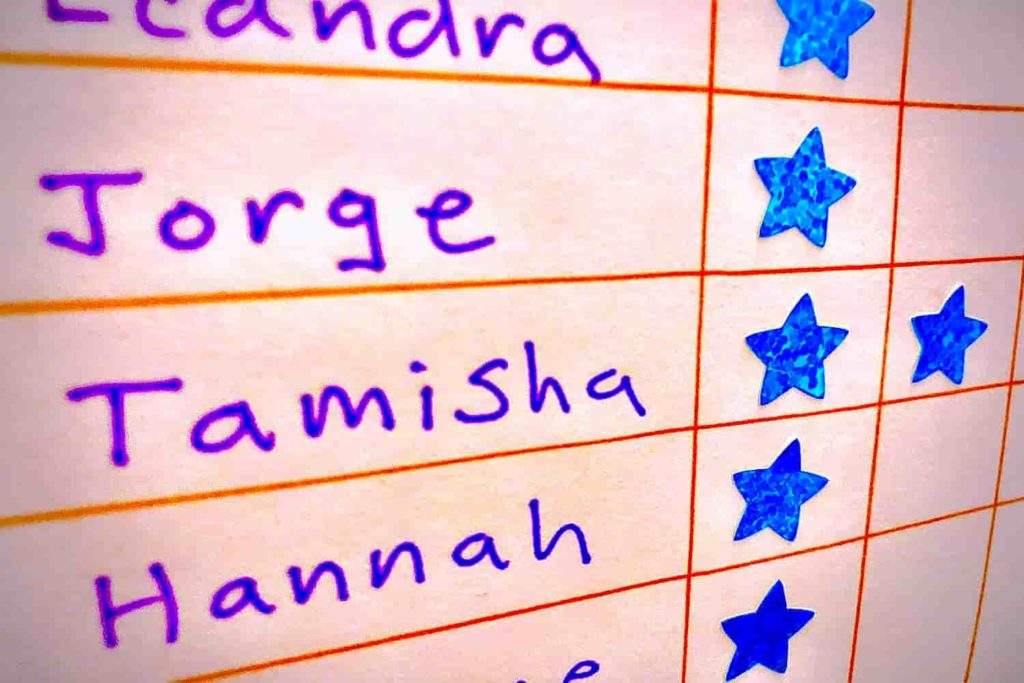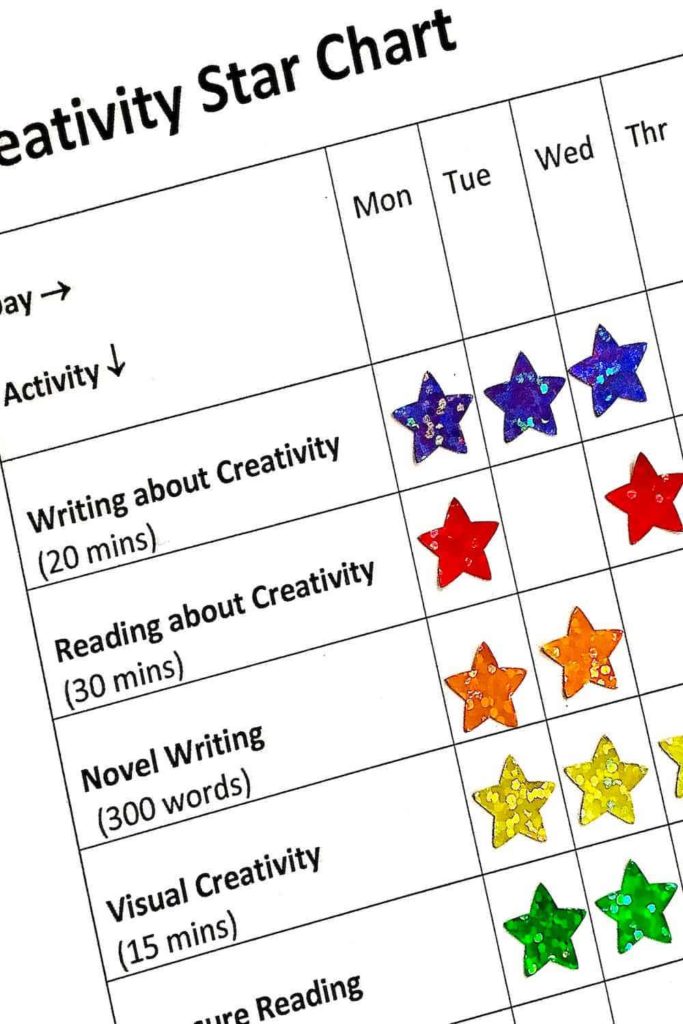
Gold-Star Imagination: Tracking Creativity
Rachel, the talented teen protagonist of the musical comedy Glee, chose the gold star as her personal symbol. Whenever she wrote her name, she attached a gold foil star beside it. She was going to be a Broadway star, and she wanted everyone to know it.
For many of us, the adhesive gold star is a memory from childhood. When we did well in elementary school, we may have gotten a gold star on our paper. For others, gold stars were attached to charts displayed in our classrooms. For each day we accomplished a goal… “Submitted Homework on Time,” for example… we received a gold star sticker on the chart!

We underestimate how powerful a small reward, especially one as seemingly insignificant as a gold star, can be. If we want to develop a habit, however, charting and rewarding is one good option. Can this technique be helpful for fostering something as seemingly intangible as creativity? I believe it can.
The Science of The Star
Marking an accomplishment, with or without a gold star, is a proven method to track progress and encourage good habits. How many of us already monitor our daily step count or hours of sleep through an application on our phones?
Much research has gone into various methods of tracking or monitoring for habit formation. The scientific literature on the topic is abundant, and because I’ve spent decades in higher education, I have been particularly interested in research on this technique for building good study habits. From exercise to education, tracking and monitoring is one verified practice for promoting good habits.
Externalizing our accomplishments is key, whether it happens in an application on a smart phone, or on a paper chart. If personal creativity is something we want foster, then tracking or monitoring is a gold-star method to do it.
Monitoring Imagination
Tracking concrete action, like the number of steps we walk each day, is relatively straight forward. We may encounter more difficulty, however, in monitoring something as seemingly ephemeral as creativity. Because of this, I suggest beginning with charting creative action.
What are the ways that we want our creativity to manifest itself in an activity? Do we want to write a novel, paint a mural, redecorate, create engaging lesson plans, make up a game for our grandchildren, or formulate a new business plan? Choosing a creative activity (or more than one) is the place to begin.
Once we have chosen our activities, we should break them down into their component parts. I especially find it helpful to think of those actions we can do in brief daily sessions. While we can’t write an entire novel every day, we could write 200 words (a few short paragraphs) in one sitting. Each day you reach your 200 words, you could give yourself a gold star on your chart.
My Creativity Star Chart
During the darkest times of the Covid-19 pandemic, I began brightening my days by monitoring my creative activities with stars. I called it my “Creativity Star Chart” because I chose rainbow-colored foil stars as the means of monitoring and rewarding my daily accomplishments. The term “star chart” also gave the activity a celestial vibe that was fun for me.
My overall goal was to create manageable, daily habits of creativity in a few different realms. At the time, my top priority was writing about creativity, so I put those activities at the top of the chart. I also wanted to work slowly but consistently on my novel, so I added that as an activity on the chart as well.

Because both my work and my primary creative outlets involved writing, it was important for me to focus some creative energies in another realm. I added “visual creativity” as a line on the table. I rewarded myself with a star if I dedicated 15 minutes a day to drawing, painting with watercolors, or felting colorful figures out of wool fibers. I began to think of the “visual creativity” line as the most rewarding aspect of the entire “Creativity Star Chart” process.
Taking Your Creativity to the Stars
This technique of tracking and monitoring can work for any type of activity. I value creativity, so I have used it mostly in that realm. It can work in any area in which we want to build good habits. My chart was almost entirely dedicated to imaginative work, but yours may have just a couple lines for creativity, and all the rest for other areas: exercise, organizing, reading, etc.

One key to making the habits stick is to personalize the charting method in ways that are meaningful for you. I used rainbow-colored star stickers because that was fun for me. Little stickers come in such a variety of shapes and designs that you can find one fits your personality perfectly.
Whether you want to start sketching daily, finish that poem you have rolling around in your mind, or build a better way of displaying your collectibles, the technique of tracking or monitoring can help establish your creative habit. We might not all end up being famous like Rachel from Glee, but we can all reach for our creative stars.